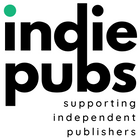You may also like
Chicago Homes
Regular price $37.00 Save $-37.00A comprehensive, first-of-its-kind book about Chicago’s residential architecture and the stories that shaped it. This is an entertaining and precisely illustrated story of Chicago homes from the city’s earliest days through the Second World War, revealing everything about what makes a home a Chicago home.
A city famous for its architecture—and for arguing with New Yorkers about who built it first and best—now has a definitive guide to the unique housing types and styles that have inspired so much devotion. This book is for curious Chicagoans and visitors alike—anyone who’s ever wondered how to spot a Foursquare or where to find Italianate homes from before the Great Chicago Fire.
Why are Chicago’s lots so narrow? How many Chicagoans built homes from a kit? What exactly is a “greystone”? The authors combine their decades of experience in historic preservation and illustration to create an evergreen resource that Chicagoans and visitors will turn to for answers to these and other questions about the city’s neighborhoods and the homes its citizens live in, visit, and admire.

Incorporating Architects
Regular price $29.95 Save $-29.95This forensic analysis traces a history of architects at one such firm, AECOM, as they assembled their own multinational corporation and embedded themselves in the operations of American empire after World War II, shielding themselves from the instabilities of a postwar political economy. Incorporating Architects reveals how architects, through their businesses more than their drawings or buildings, modulated the political economy, gripped the reins of their profession, and produced the global injustices that define our neoliberal present.

Root Shock
Regular price $24.95 Save $-24.95Root Shock examines 3 different U.S. cities to unmask the crippling results of decades-old disinvestment in communities of color and the urban renewal practices that ultimately destroyed these neighborhoods for the advantage of developers and the elite.
Like a sequel to the prescient warnings of urbanist Jane Jacobs, Dr. Mindy Thompson Fullilove reveals the disturbing effects of decades of insensitive urban renewal projects on communities of color. For those whose homes and neighborhoods were bulldozed, the urban modernization projects that swept America starting in 1949 were nothing short of an assault. Vibrant city blocks - places rich in culture - were torn apart by freeways and other invasive development, devastating the lives of poor residents. Fullilove passionately describes the profound traumatic stress- the "root shock"that results when a neighborhood is demolished. She estimates that federal and state urban renewal programs, spearheaded by business and real estate interests, destroyed 1,600 African American districts in cities across the United States. But urban renewal didn't just disrupt black communities: it ruined their economic health and social cohesion, stripping displaced residents of their sense of place as well. It also left big gashes in the centers of cities that are only now slowly being repaired. Focusing on the Hill District of Pittsburgh, the Central Ward in Newark, and the small Virginia city of Roanoke, Dr. Fullilove argues powerfully against policies of displacement. Understanding the damage caused by root shock is crucial to coping with its human toll and helping cities become whole. Mindy Thompson Fullilove, MD, is a research psychiatrist at New York State Psychiatric Institute and professor of clinical psychiatry and public health at Columbia University. She is the author of five books, including Urban Alchemy.

A Framework for Geodesign
Regular price $95.99 Save $-95.99A Framework for Geodesign: Changing Geography by Design presents the key concepts, history, and methodology of geodesign. As an idea, geodesign has the potential to enable more effective and symbiotic collaboration among the several design professions, geographically-oriented sciences, information technologists, and people impacted by change (“the people of the place”) when all of these groups aim to influence major environmental and social change for the better. According to author Carl Steinitz, this collaboration is essential.
Steinitz’s framework, described here in detail, can contribute to that goal. It is clear that for serious societal and environmental issues, designing for change cannot be a solitary activity. It inevitably is a team endeavor with many participants from the design professions and geographic sciences, linked by technology from several locations for rapid communication and feedback, and reliant on transparent communication with the people affected by change. These demands create opportunities for geodesign and the need for organizing that collaboration.
Part I of the book is about the necessary but sometimes difficult collaboration between designers and scientists, and also focuses on key aspects of study areas, scale, and size which influence how geodesign is organized and carried out. Part II presents Steinitz’s framework and addresses six key questions, and their related types of models, which must be integrated in geodesign. Part III features nine case studies that illustrate different ways of designing for change, while Part IV explores the future of geodesign in research, education, and practice.
A Framework for Geodesign ooks mostly to the future, with a primary intention of helping the collaborating participants to achieve, in the words of the author, “practical benefits from geodesign.”

Reconnecting Cities, People, and Nature
Regular price $41.99 Save $-41.99Reconnecting Cities, People, and Nature is a call to action for urban designers to deeply engage with the living fabric of the city. By working together with humans, non-humans, and allied disciplines, designers can spark a transformation that reshapes cities into thriving, sustainable social and natural ecosystems. Twenty thought-provoking design exercises explore what the city as a complex biotope could be like, inspiring action and creating change.
- Foreword by Rahul Mehrotra
- Twenty exercises based on practice and teaching
- Hand-drawn illustrations

Architecture and Affect in the Middle Ages
Regular price $49.95 Save $-49.95






